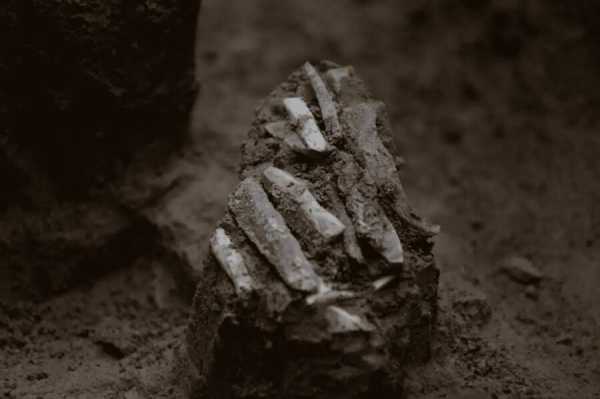The entire set of 29 blades and tips was likely once carried in a leather pouch that has long since disintegrated.

Journal of Paleolithic Archaeology. A group of tools at an excavation site.
Analysis revealed that the 29 artifacts were not a random selection. Larger blades were used for working medium- and hard-to-hard materials, while smaller blades exhibit wear consistent with cutting soft materials or working with animal hides. Six artifacts exhibited cracks consistent with projectiles, and at least one exhibited microscopic linear impact marks (MLIT), confirming that it had been used as an arrowhead or spearhead.
Perhaps even more interesting, however, is where these tools came from.
Evidence of long-distance trade networks
The raw materials used to make the blades and points in the toolkit were transported from far beyond their discovery site. Of the 29 artifacts, 19 were made of chert erratics from glacial deposits located more than 130 kilometers to the north. Seven were made of radiolarite, likely from western Slovakia, and one was made of opal mined 110-135 kilometers away.
“The diversity of raw materials within a cluster can be explained by several factors: direct collection by the individual or group from outcrops or other natural sources; exchange or distribution between groups or individuals visiting different raw material extraction sites; reuse of old materials from abandoned camps or workshops; collection from caches; or a combination of these practices,” the authors write.
Sourse: www.allthatsinteresting.com





